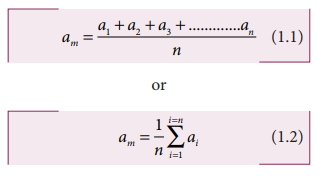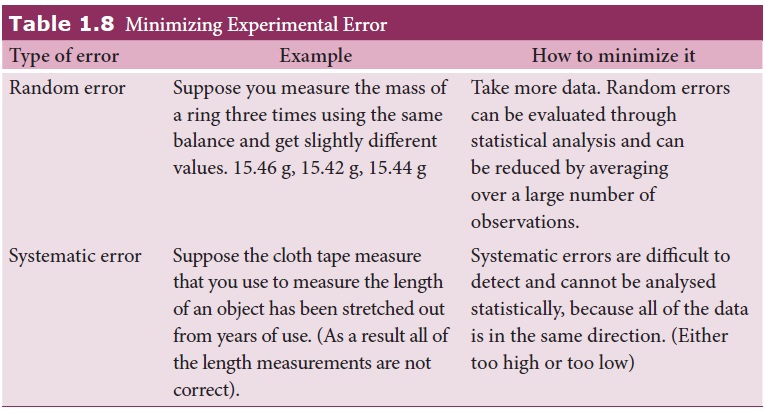Systematic, Random, Gross errors | Theory of Errors | Physics - Errors in Measurement | 11th Physics : UNIT 1 : Nature of Physical World and Measurement
Chapter: 11th Physics : UNIT 1 : Nature of Physical World and Measurement
Errors in Measurement
Errors
in Measurement
The
uncertainty in a measurement is called an error. Random error, systematic error
and gross error are the three possible errors.
i) Systematic errors
Systematic
errors are reproducible inaccuracies that are consistently in the same
direction. These occur often due to a problem that persists throughout the
experiment. Systematic errors can be classified as follows
a. Instrumental errors
When
an instrument is not calibrated properly at the time of manufacture,
instrumental errors may arise. If a measurement is made with a meter scale
whose end is worn out, the result obtained will have errors. These errors can
be corrected by choosing the instrument carefully.
b. Imperfections in
experimental technique or procedure
These
errors arise due to the limitations in the experimental arrangement. As an
example, while performing experiments with a calorimeter, if there is no proper
insulation, there will be radiation losses. This results in errors and to
overcome these, necessary correction has to be applied.
c. Personal errors
These
errors are due to individuals performing the experiment, may be due to
incorrect initial setting up of the experiment or carelessness of the
individual making the observation due to improper precautions.
d. Errors due to external causes
The
change in the external conditions during an experiment can cause error in
measurement. For example, changes in temperature, humidity, or pressure during
measurements may affect the result of the measurement.
e. Least count error
Least
count is the smallest value that can be measured by the measuring instrument,
and the error due to this measurement is least count error. The instrument’s
resolution hence is the cause of this error. Least count error can be reduced
by using a high precision instrument for the measurement.
ii. Random errors
Random
errors may arise due to random and unpredictable variations in experimental conditions
like pressure, temperature, voltage supply etc. Errors may also be due to
personal errors by the observer who performs the experiment. Random errors are
sometimes called “chance error”. When
different readings are obtained by a
person every time he repeats the experiment, personal error occurs. For
example, consider the case of the thickness of a wire measured using a screw
gauge. The readings taken may be different for different trials. In this case,
a large number of measurements are made and then the arithmetic mean is taken.
If
n number of trial readings are taken in an experiment, and the readings are a1,
a2, a3,…………………. an. The arithmetic mean is

Usually this arithmetic mean is taken as the best possible true value of the quantity.
Certain
procedures to be followed to minimize experimental errors, along with examples
are shown in Table 1.8.

iii. Gross Error
The
error caused due to the shear carelessness of an observer is called gross
error.
For
example
i.
Reading an instrument without setting it properly.
ii.
Taking observations in a wrong manner without bothering about the sources of
errors and the precautions.
iii.
Recording wrong observations.
iv.
Using wrong values of the observations in calculations.
These
errors can be minimized only when an observer is careful and mentally alert.
Related Topics